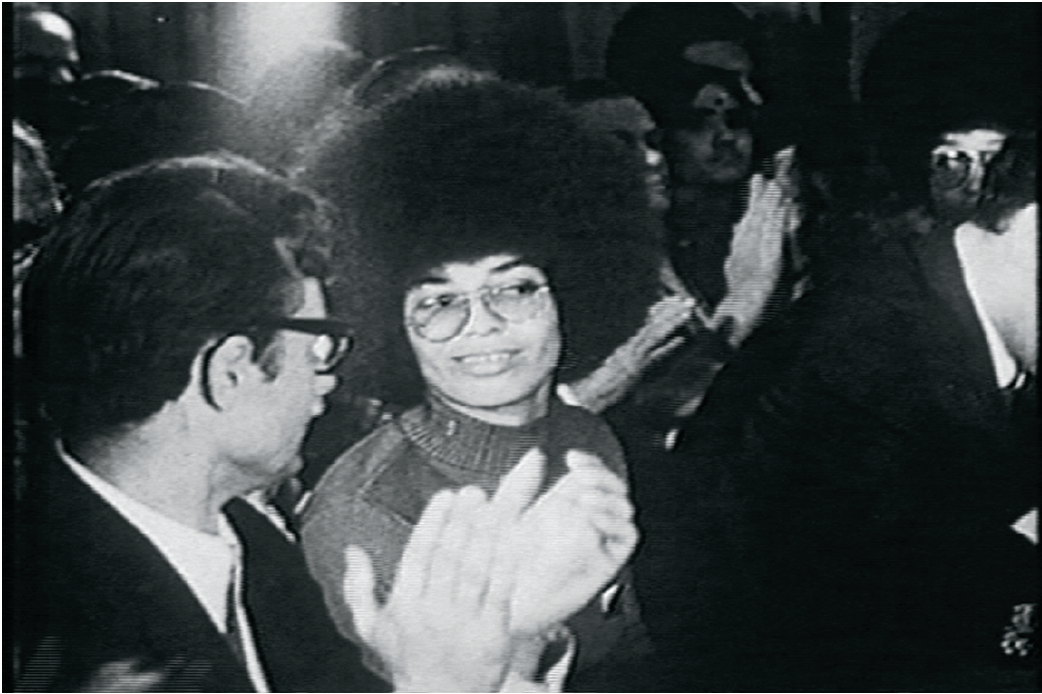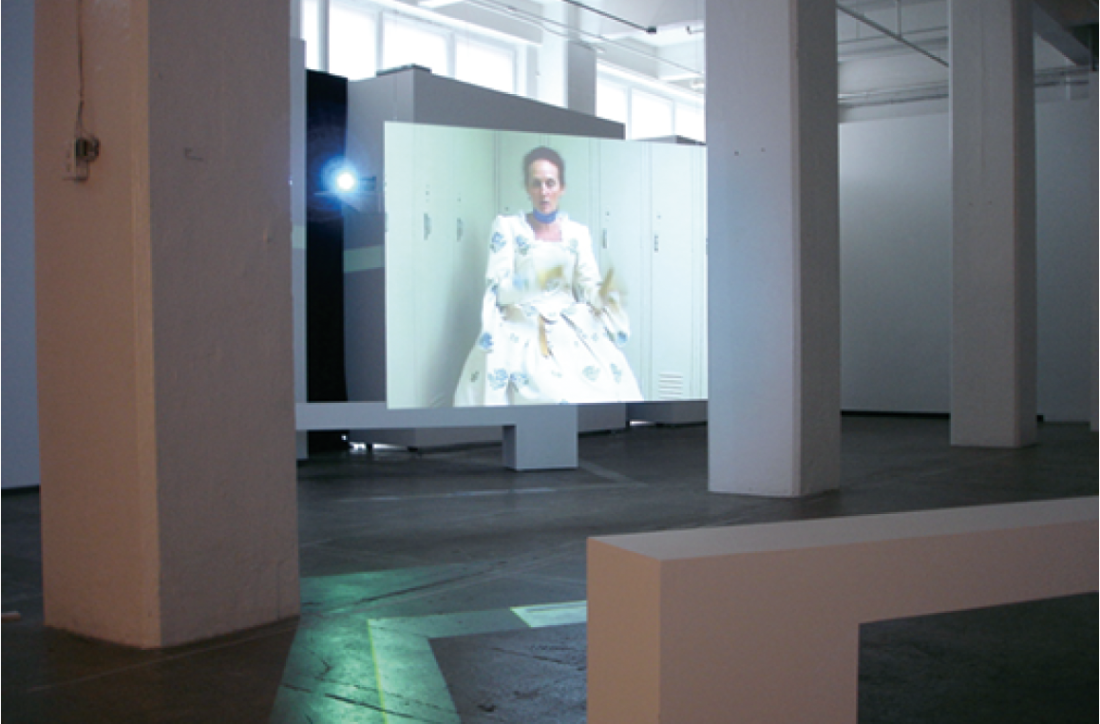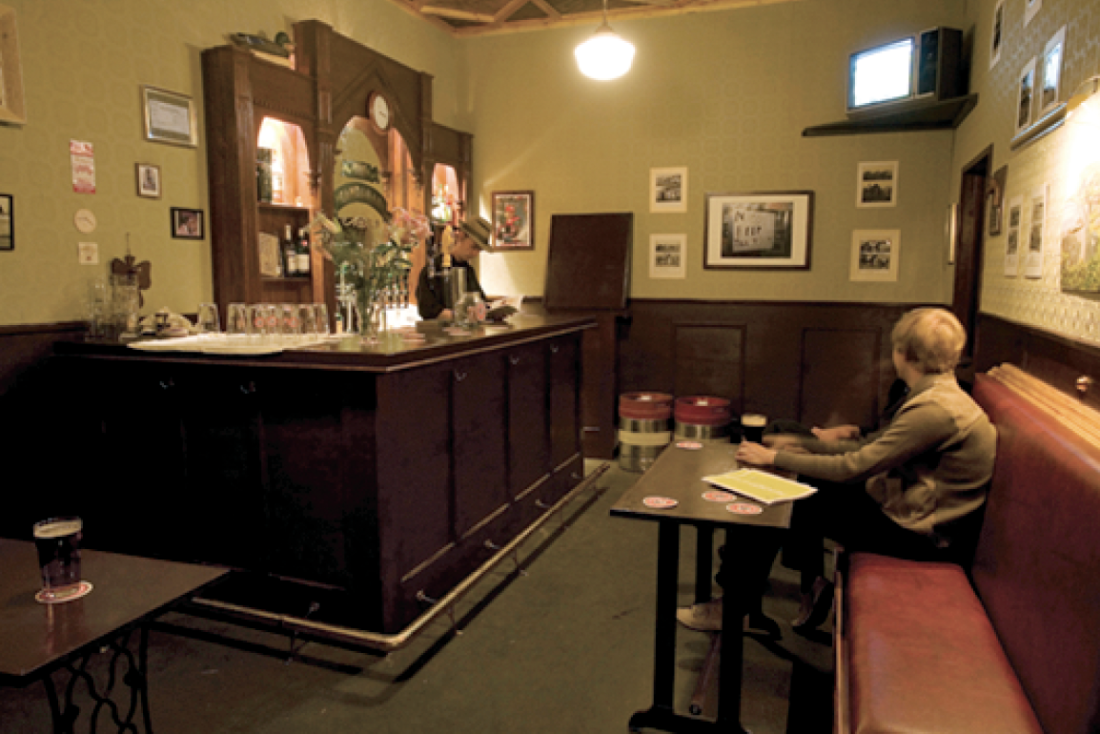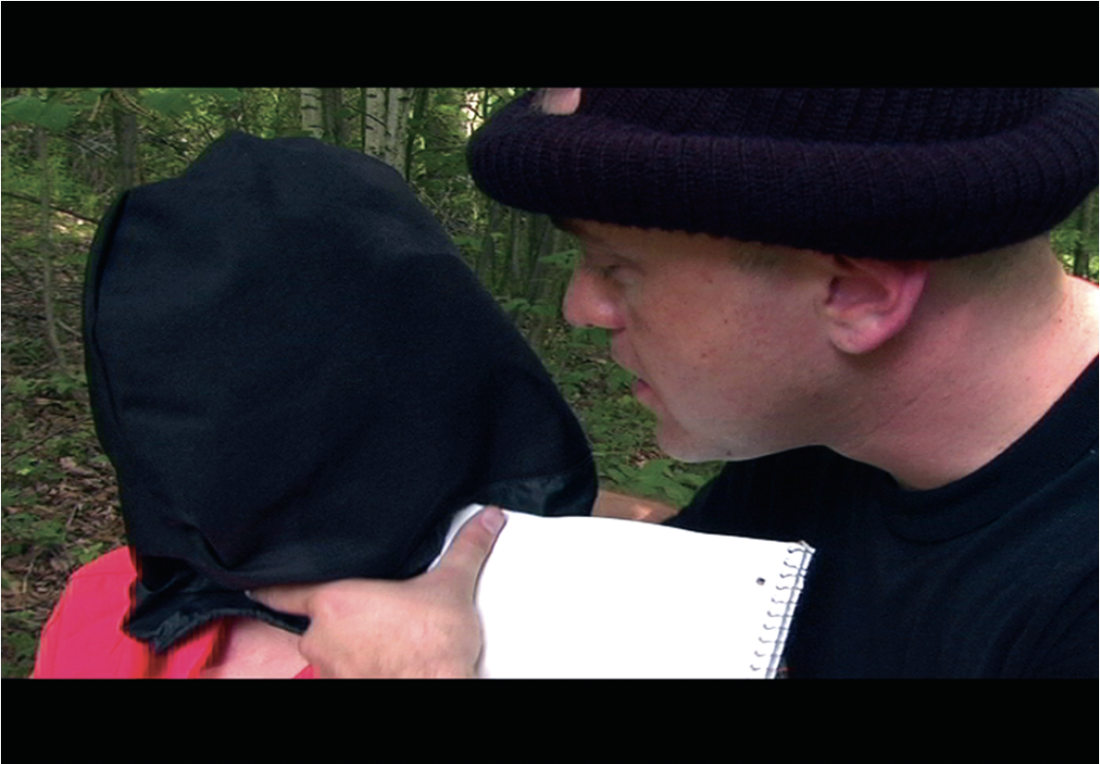Pretend: Theatre & Video
Each summer sunburned suburbanites and theatre sports aficionados descend on Winnipeg’s gallery district to partake of the city’s two-week Fringe Festival. Plug In ICA curator Steven Matijcio planned to lure these theatre lovers into the world of fine art. His strategy was to offer an eclectic smattering of time-based works that make reference to the legacy of theatre by addressing the nature of fiction, the roles of audience and performer, and the pleasure of make-believe. Matijcio’s curatorial tactic might well have been to overwhelm the bountiful Fringe Festival; during its four-week run, “Pretend: Theatre & Video” featured more than 290 minutes of video.
The exhibition opened with In the Middle of a Movie, a collaborative video project by Finnish artist Tellervo Kalleinen. Kalleinen visited five cities around the world and placed ads seeking local participants who would write a scene in a movie for a young Finnish woman, then act these scenes with her. Although few, and possibly none, of these short works are great art on their own merits, the complex social interplay between Tellervo and her collaborators forms a rich subtext of fantasy, desire and power. Following each short, and often inexplicable, scene is an interview with her collaborator, who explains what his or her idea had been.

Coco Fusco, AKA Mrs. George Gilbert, 2004, video, 32:00 minutes. Images courtesy Plug In ICA, Winnipeg.
In the Middle of a Movie, half intentionally, delves into stereotypes and the influence of mainstream media. Interestingly, almost none of her collaborators cast Kalleinen as a Finnish woman, perhaps because there are too few preconceived ideas of Finnish women. In the Middle of a Movie also resonates with a dash of utopianism, since consumers of popular culture are empowered here as creators. But it is most satisfying when viewed as a simple provocation for personal creative expression and interaction with a stranger.
Two other works in the exhibition series were social, cultural and political critiques. Both Omer Fast and Coco Fusco are openly political; their works deconstruct American identity, traditional (gender) roles and a growing climate of intolerance in the wake of September 11th.
In Omer Fast’s two-channel video, Godville, three cultural interpreters who inhabit the living history museum of colonial Williamsburg are interviewed. Speaking as themselves and as their 18th-century characters, in full costume, they are filmed as if sitting for a formal portrait. Stills of living areas in colonial Williamsburg are projected on the opposite side of the screen, an addition I found completely unnecessary. One of Fast’s interview subjects describes her work in the living museum—living between two eras—as schizophrenic. It seems likely this reference to Baudrillard was planted by the artist in order to justify his digital jiggery-pokery, though it is somewhat deflated by the complete lack of media in colonial Williamsburg. New French Theory aside, Fast’s primary objective in mashing together his subjects’ fictional and contemporary narratives is to underscore how patriotism is deployed in American politics: the ideals of liberty and equality being forged through resisting British rule and fighting in Iraq.

Installation view with Omer Fast, Godville, 2005, 2-channel video installation, 59:00 minutes.
A suitable companion to Fast’s piece by Coco Fusco, Operation Atropos, views the denial of freedom, equality and basic rights for prisoners through the lens of feminism. Beginning with a simple statement—“What surprised me the most about the pictures of prisoner abuse at Abu Ghraib was the presence of women in them. Not as victims … but as victimizers. I decided that I wanted to learn more about interrogation”—Fusco’s Operation Atropos, named for the Greek goddess of fate responsible for death, wonders more about the nature of women than of war. She hired a cadre of ex-military interrogators, Team Delta, to teach her and six female friends interrogation techniques. The video documents their training, focusing on a period when they’re treated as prisoners. They are blindfolded with bags over their heads, strip-searched, given numbers and dressed in orange prison jumpsuits. Degradation and provocation continue for what seems like days, but in reality is only eight hours, as, one by one, the women are interrogated, using various methods. An unnamed interrogator from Team Delta concedes that the women stood up better than many male participants. When the tables are turned, the women prove to be ineffectual at interrogating Team Delta. Fusco’s video seems to arrive at the disturbing conclusion that women are better equipped to excel in the role of victim than victimizer.

Theo Sims, The Candahar, 2005–ongoing, mixed media installation.
Borrowing the stylistic licks of cable TV indulgences such as A&E biographies and noir-ish detective dramas, a second piece by Fusco, AKA Mrs. George Gilbert, was easily the standout piece in this exhibition. This video examines Black Power in its literal and metaphorical contexts, connecting it to the black body, constructed as the site of sexuality and violence, and the mythical power of the afro, which could conceal anything. What promises to be a standard documentary focused on the FBI’s vilification of black philosopher Angela Davis, narrated by Fusco in her likeably serious yet girlish speech, is suddenly complicated by another voice in the narrative—a besotted FBI agent.
The figure of hegemonic order, the FBI agent, confesses his attraction to his surveillance subject, Davis. The agent’s obsession with the philosophy professor’s beauty demonstrates that the power attributed to black people often serves to objectify and de-humanize; Fusco concludes by noting that Davis’s famous afro hairstyle has eclipsed her vigorous intellect and her contribution to post-colonial theory. She is remembered only as a hairstyle.

Coco Fusco, Operation Atropos, 2006, video, 59:00 minutes.
The sole weak point in the show was several short, stop-motion animation videos by Nathalie Djurberg. The jerky animation, lumpily modelled figures, poor lighting and awkward framing could have been excused had the narratives come across as anything more than a petty fascination with sexual deviancy and cruelty.
Presented concurrent with these video works was local artist Theo Sims’s installation The Candahar, which casts the viewer as actor, or at least extra, within the stage of a typical Belfast pub recreated by the artist as an actually operating pub. On the exterior of the construction, rough pine frame and unfinished walls were exposed, marking the bar, which, inside, was a perfect replica, as an illusory place.
Though enjoyable and fascinating, the sheer number of videos made this a difficult, if not impossible, exhibition to take in. Luckily for those who couldn’t view all the works, they didn’t necessarily add up to a cohesive whole and could be appreciated individually. ■
“Pretend: Theatre & Video,” curated by Steven Matijcio, was exhibited at Plug In ICA, Winnipeg, from July 20 to August 18, 2007.
Sandee Moore is a nationally exhibited media and performance artist and the Director of Video Pool Media Arts Centre.

